I'm using Abp version 3.6.2, ASP.Net Core 2.0 and free startup template for multi-page web application. I have following data model:
public class Person : Entity<Guid> {
public Person() {
Phones = new HashSet<PersonPhone>();
}
public virtual ICollection<PersonPhone> Phones { get; set; }
public string Name { get; set; }
}
public class PersonPhone : Entity<Guid> {
public PersonPhone() { }
public Guid PersonId { get; set; }
public virtual Person Person { get; set; }
public string Number { get; set; }
}
// DB Context and Fluent API
public class MyDbContext : AbpZeroDbContext<Tenant, Role, User, MyDbContext> {
public virtual DbSet<Person> Persons { get; set; }
public virtual DbSet<PersonPhone> PersonPhones { get; set; }
protected override void OnModelCreating(ModelBuilder modelBuilder) {
base.OnModelCreating(modelBuilder);
modelBuilder.Entity<PersonPhone>(entity => {
entity.HasOne(d => d.Person)
.WithMany(p => p.Phones)
.HasForeignKey(d => d.PersonId)
.OnDelete(DeleteBehavior.Cascade)
.HasConstraintName("FK_PersonPhone_Person");
});
}
}
The entities Person and PersonPhone are given here as an example, since there are many "grouped" relationships in the data model that are considered in a single context. In the example above, the relationships between the tables allow to correlate several phones with one person and the associated entities are present in the DTO.
The problem is that when creating the Person entity, I can send the phones with the DTO and they will be created with Person as expected. But when I update Person, I get an error:
Abp.AspNetCore.Mvc.ExceptionHandling.AbpExceptionFilter - The instance of
entity type 'PersonPhone' cannot be tracked because another instance
with the same key value for {'Id'} is already being tracked. When attaching
existing entities, ensure that only one entity instance with a given key
value is attached. Consider using
'DbContextOptionsBuilder.EnableSensitiveDataLogging' to see the conflicting
key values.
In addition to this, the question arises as to how to remove non-existing PersonPhones when updating the Person object? Previously, with the direct use of EntityFramework Core, I did this:
var phones = await _context.PersonPhones
.Where(p =>
p.PersonId == person.Id &&
person.Phones
.Where(i => i.Id == p.Id)
.Count() == 0)
.ToListAsync();
_context.PersonPhones.RemoveRange(phones);
_context.Person.Update(person);
await _context.SaveChangesAsync();
Question
Is it possible to implement a similar behavior with repository pattern? If "Yes", then is it possible use UoW for this?
P.S.: Application Service
public class PersonAppService : AsyncCrudAppService<Person, PersonDto, Guid, GetAllPersonsDto, CreatePersonDto, UpdatePersonDto, EntityDto<Guid>>, IPersonAppService {
private readonly IRepository<Person, Guid> _personRepository;
public PersonAppService(IRepository<Person, Guid> repository) : base(repository) {
_personRepository = repository;
}
public override async Task<PersonDto> Update(UpdatePersonDto input) {
CheckUpdatePermission();
var person = await _personRepository
.GetAllIncluding(
c => c.Addresses,
c => c.Emails,
c => c.Phones
)
.Where(c => c.Id == input.Id)
.FirstOrDefaultAsync();
ObjectMapper.Map(input, person);
return await Get(input);
}
}
Dynamic API calls:
// All O.K.
abp.services.app.person.create({
"phones": [
{ "number": 1234567890 },
{ "number": 9876543210 }
],
"name": "John Doe"
})
.done(function(response){
console.log(response);
});
// HTTP 500 and exception in log file
abp.services.app.person.update({
"phones": [
{
"id": "87654321-dcba-dcba-dcba-000987654321",
"number": 1234567890
}
],
"id":"12345678-abcd-abcd-abcd-123456789000",
"name": "John Doe"
})
.done(function(response){
console.log(response);
});
Update
At the moment, to add new entities and update existing ones, I added the following AutoMapper profile:
public class PersonMapProfile : Profile {
public PersonMapProfile () {
CreateMap<UpdatePersonDto, Person>();
CreateMap<UpdatePersonDto, Person>()
.ForMember(x => x.Phones, opt => opt.Ignore())
.AfterMap((dto, person) => AddOrUpdatePhones(dto, person));
}
private void AddOrUpdatePhones(UpdatePersonDto dto, Person person) {
foreach (UpdatePersonPhoneDto phoneDto in dto.Phones) {
if (phoneDto.Id == default(Guid)) {
person.Phones.Add(Mapper.Map<PersonPhone>(phoneDto));
}
else {
Mapper.Map(phoneDto, person.Phones.SingleOrDefault(p => p.Id == phoneDto.Id));
}
}
}
}
But there is a problem with removed objects, that is, with objects that are in the database, but not in the DTO. To delete them, i'm in a loop compare objects and manually delete them from the database in the application service:
public override async Task<PersonDto> Update(UpdatePersonDto input) {
CheckUpdatePermission();
var person = await _personRepository
.GetAllIncluding(
c => c.Phones
)
.FirstOrDefaultAsync(c => c.Id == input.Id);
ObjectMapper.Map(input, person);
foreach (var phone in person.Phones.ToList()) {
if (input.Phones.All(x => x.Id != phone.Id)) {
await _personAddressRepository.DeleteAsync(phone.Id);
}
}
await CurrentUnitOfWork.SaveChangesAsync();
return await Get(input);
}
Here there is another problem: the object, which returned from Get, contains all entities (deleted, added, updated) are simultaneously. I also tried to use synchronous variants of methods and opened a separate transaction with UnitOfWorkManager, like so:
public override async Task<PersonDto> Update(UpdatePersonDto input) {
CheckUpdatePermission();
using (var uow = UnitOfWorkManager.Begin()) {
var person = await _companyRepository
.GetAllIncluding(
c => c.Phones
)
.FirstOrDefaultAsync(c => c.Id == input.Id);
ObjectMapper.Map(input, person);
foreach (var phone in person.Phones.ToList()) {
if (input.Phones.All(x => x.Id != phone.Id)) {
await _personAddressRepository.DeleteAsync(phone.Id);
}
}
uow.Complete();
}
return await Get(input);
}
but this did not help. When Get is called again on the client side, the correct object is returned. I assume that the problem is either in the cache or in the transaction. What am I doing wrong?
